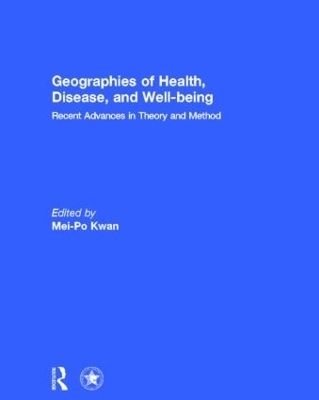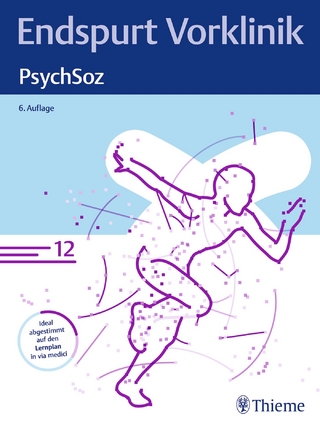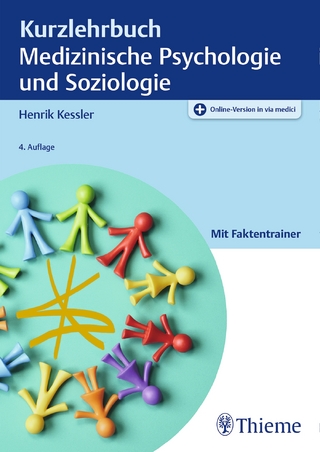
Geographies of Health, Disease and Well-being
Routledge (Verlag)
978-0-415-87001-6 (ISBN)
This book was published as a special issue of Annals of the Association of American Geographers.
Mei-Po Kwan is Professor of Geography and Geographic Information Science at the University of Illinois at Urbana-Champaign. A health/urban geographer with a focus on environmental health, mobility and health, and application of advanced geospatial methods in health research, she has received several prestigious research awards and garnered substantial research support from sources including the National Institutes of Health and the National Science Foundation.
1. Introduction Geographies of Health Health Inequalities 2. Ethnic Density and Maternal and Infant Health Inequalities: Bangladeshi Immigrant Women in New York City in the 1990s 3. With Reserves: Colonial Geographies and First Nations Health 4. Smoking, Ethnic Residential Segregation, and Ethnic Diversity: A Spatio-temporal Analysis 5. Spatial Methods to Study Local Racial Residential Segregation and Infant Health in Detroit, Michigan 6. Connecting the Dots Between Health, Poverty, and Place in Accra, Ghana Environmental Health 7. Geospatial Methods for Reducing Uncertainties in Environmental Health Risk Assessment: Challenges and Opportunities 8. Opening Up the Black Box of the Body in Geographical Obesity Research: Toward a Critical Political Ecology of Fat 9. The Uncertain Geographic Context Problem 10. Environmental Health as Biosecurity: “Seafood Choices,” Risk, and the Pregnant Woman as Threshold 11. The Mutual Conditioning of Humans and Pathogens: Implications for Integrative Geographical Scholarship 12. Moving Neighborhoods and Health Research Forward: Using Geographic Methods to Examine the Role of Spatial Scale in Neighborhood Effects on Health 13. Is a Green Residential Environment Better for Health? If So, Why? Spatial Analysis and Modeling of Disease 14. Integration of Spatial and Social Network Analysis in Disease Transmission Studies 15. Modeling Individual Vulnerability to Communicable Diseases: A Framework and Design 16. Population Movement and Vector-Borne Disease Transmission: Differentiating Spatial–Temporal Diffusion Patterns of Commuting and Noncommuting Dengue Cases 17. Climate Change and Risk Projection: Dynamic Spatial Models of Tsetse and African Trypanosomiasis in Kenya 18. Spatial-Temporal Analysis of Cancer Risk in Epidemiologic Studies with Residential Histories 19. An Examination of Spatial Concentrations of Sex Exchange and Sex Exchange Norms Among Drug Users in Baltimore, Maryland 20. Five Essential Properties of Disease Maps Health Care Provision, Access, and Utilization 21. Migrant Workers in Home Care: Routes, Responsibilities, and Respect 22. Urban Politics and Mental Health: An Agenda for Health Geographic Research 23. Geographic Barriers to Community-Based Psychiatric Treatment for Drug-Dependent Patients 24. Measurement, Optimization, and Impact of Health Care Accessibility: A Methodological Review 25. Spatial Heterogeneity in Cancer Control Planning and Cancer Screening Behavior 26. Spatial Access and Local Demand for Major Cancer Care Facilities in the United States 27. Patterns of Patient Registration with Primary Health Care in the UK National Health Service Health and Well-Being 28. (Un)Healthy Men, Masculinities, and the Geographies of Health 29. Therapeutic Imaginaries in the Caribbean: Competing Approaches to HIV/AIDS Policy in Cuba and Belize 30. Producing Contaminated Citizens: Toward a Nature–Society Geography of Health and Well-Being 31. “We Pray at the Church in the Day and Visit the Sangomas at Night”: Health Discourses and Traditional Medicine in Rural South Africa Global/Transnational Health and Health Issues in the Global South 32. Critical Interventions in Global Health: Governmentality, Risk, and Assemblage 33. Spatial Epidemiology of HIV Among Injection Drug Users in Tijuana, Mexico 34. Structural Violence and Women’s Vulnerability to HIV/AIDS in India: Understanding Through a “Grief Model” Framework 35. U.S. Migration, Translocality, and the Acceleration of the Nutrition Transition in Mexico Book Review Essay 36. The Geography of Life and Death: Deeper, Broader, and Much More Complex
| Zusatzinfo | 17 Line drawings, black and white; 38 Halftones, color; 14 Halftones, black and white |
|---|---|
| Verlagsort | London |
| Sprache | englisch |
| Maße | 219 x 276 mm |
| Gewicht | 840 g |
| Themenwelt | Studium ► 1. Studienabschnitt (Vorklinik) ► Med. Psychologie / Soziologie |
| Naturwissenschaften ► Geowissenschaften ► Geografie / Kartografie | |
| Sozialwissenschaften ► Soziologie | |
| Technik ► Umwelttechnik / Biotechnologie | |
| ISBN-10 | 0-415-87001-1 / 0415870011 |
| ISBN-13 | 978-0-415-87001-6 / 9780415870016 |
| Zustand | Neuware |
| Informationen gemäß Produktsicherheitsverordnung (GPSR) | |
| Haben Sie eine Frage zum Produkt? |
aus dem Bereich


